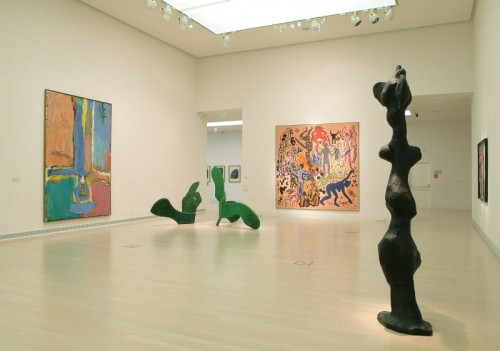László Fehér gained international recognition at the 1990 Venice Biennale, where Peter Ludwig, among others, bought some of his works. His paintings, made during the years of regime change and reduced to a few colours and basic elements, evoked the gloomy world and depressing atmosphere of the 1950s, which was relieved by nostalgia for childhood through the inclusion of family photos as the starting point for the works. The relationship between the heavy architectural elements and monuments and the elusive figures, often marked only by outlines, and the ambivalence between the two, condensed the atmosphere of the time and personal emotions. The artist made the post-war Hungarian and Eastern European history, with all its absurdities and contradictions, perceptible and tangible through his own story. In the painting Well with a Figure, the tiny child depicted in the overhead view is almost lost in front of the huge black surface. The body of the figure, drawn with white outlines, is transparent, which emphasises the dreamlike quality of the scene. Above the boy’s head is a huge yellow ring of light: the monumental well of the title, which, unlike the figure, is depicted in space. The artist juxtaposes the loneliness and fragility of the once child with the weight and unchanging nature of the built environment in an eye-catching composition that is almost poster-like in its simplicity.
Krisztina Szipőcs

